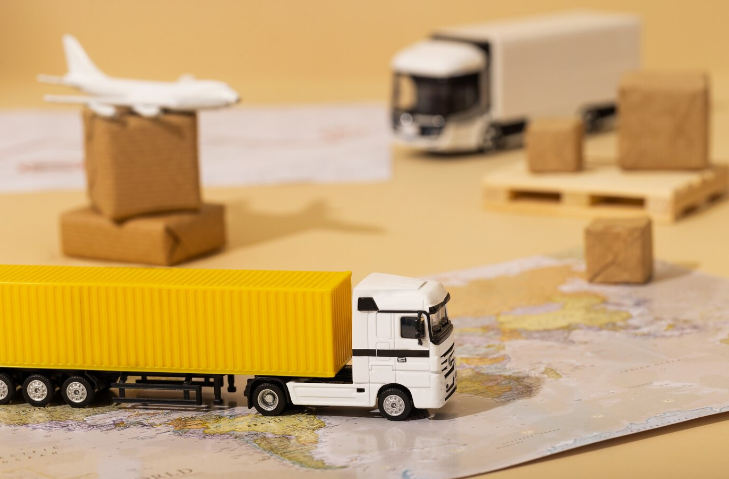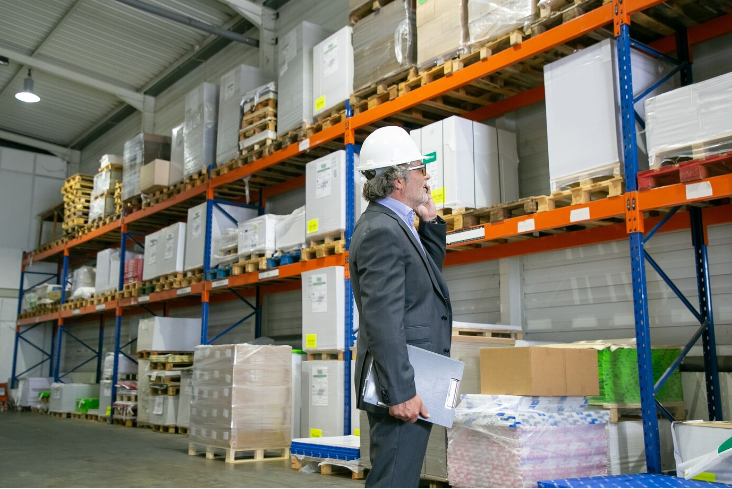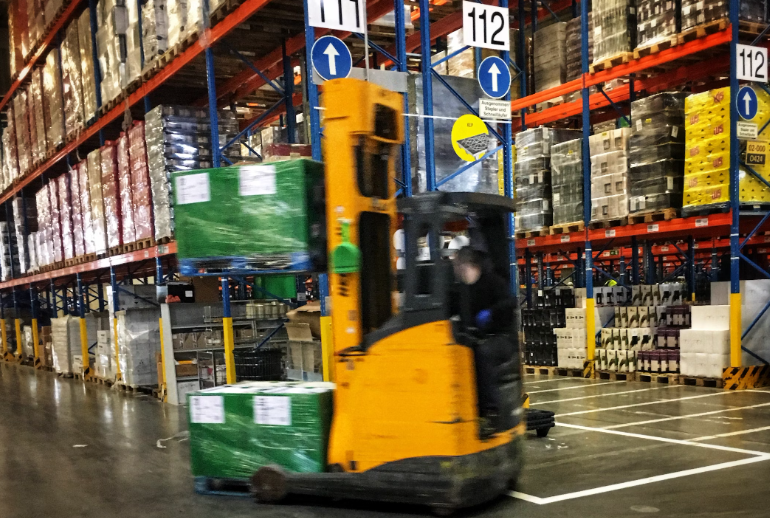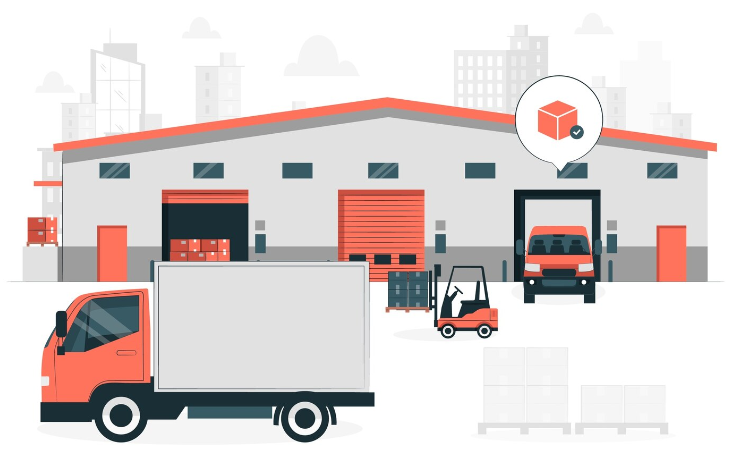Table of Contents
Why Shipping Rates Fluctuate? All You Need to Know
Time: Mar 14,2025 Author: SFC Source: www.sendfromchina.com
Shipping rate changes can seem mysterious, but they're influenced by many factors. Fuel prices, seasonal trends, and operational challenges all play a role. These changes aren't random; they're caused by real-world factors that affect both businesses and consumers.Knowing what drives these changes helps everyone plan better. It's about adapting to a market that's always shifting.

Key Takeaways
- Shipping rates shift due to fuel costs, distance, carrier policies, etc...- Changing shipping costs affect budgets for both online stores and individual buyers.
- Seasonal peaks like holidays amplify shipping price volatility.
- Understanding shipping cost factors improves decision-making for logistics.
- Businesses can reduce surprises by tracking what drives these fluctuations.
1. The Fundamentals of Shipping Rate Determination
Learning about shipping rates starts with understanding how carriers set prices. They consider weight, distance, and how fast you want it. Let's explore how these elements combine.Weight and Dimensional Factors
Carriers use dimensional weight pricing to balance size and weight. They calculate a box's size by multiplying its length, width, and height. Then, they compare this to the actual weight. If the size weight is higher, that's what matters about the shipping rate calculation.For example, a big, fluffy comforter might cost more than its weight suggests, even if it's in a big box.
Distance and Zones in Shipping Calculations
Shipping zones divide the U.S. into areas based on distance. Carriers use shipping zones to adjust prices based on where you are. Here's how it works:- Zone 1: Local or regional deliveries (e.g., Chicago to Indianapolis)
- Zone 5: Cross-country moves (e.g., New York to Los Angeles)
- International: Global zones with customs fees added
Service Level Selection and Its Impact
| Company | Pricing Focus | Service Highlights |
|---|---|---|
| UPS | Predominantly volume-based discounts | Guaranteed overnight delivery |
| FedEx | Zonal rate structures | Global network access |
| USPS | Flat-rate envelopes | Affordable bulk shipping |
Choosing a service level means deciding between speed and cost. For example, Amazon lets customers pick their speed and price. This way, they can balance their needs.
2. Reasons Why Shipping Rates Fluctuate

Fuel Prices: The Elephant in the Cargo Hold
If shipping costs were a cake, fuel would be the flour. No ingredient is more essential—or volatile. Maritime shipping alone guzzles over 300 million tons of fossil fuels annually, and when oil prices spike, carriers pass those costs to customers. But it’s not just about crude oil. Taxes, environmental levies (like the International Maritime Organization’s 2020 sulfur cap), and even regional conflicts (think Russia-Ukraine) reshape fuel dynamics overnight.In 2022, for instance, the average price of very low-sulfur fuel oil (VLSFO) jumped 64% in six months, pushing Asia-Europe container rates up by 22%. But here’s the kicker: fuel isn’t the only factor. It collides with other variables, like vessel speed adjustments to save fuel (“slow steaming”), which ironically can delay shipments and tighten capacity.
Supply, Demand, and the Pandemic Hangover
Remember the toilet paper panic of 2020? That was a preview. COVID-19 scrambled global supply chains, creating a “shipocalypse” where demand for goods soared while ports choked on labor shortages and lockdowns. By late 2021, the cost to ship a container from Shanghai to Los Angeles hit $20,000—up 1,000% from pre-pandemic norms.But even as the world normalized, the scars remained. Consumers kept buying online, factories ramped up, and ports like Rotterdam and Long Beach became parking lots for ships. The result? A seller’s market for carriers. When demand outpaces vessel space, rates skyrocket. Simple economics—until you factor in human behavior. Retailers over-ordering to hedge against delays (“just-in-case” inventory) only worsen the crunch.
Geopolitical Whiplash: Trade Wars and Chokepoints
Global trade routes are the veins of the economy, and geopolitical tensions are the blood clots. Take the Suez Canal blockage in 2021. One stuck ship, the Ever Given, disrupted 12% of global trade, costing $9.6 billion per day. Rates for Asia-Mediterranean routes surged 45% in a week.But it’s not just accidents. Trade wars (like U.S.-China tariffs) reroute shipments overnight, forcing carriers to adjust networks. Sanctions on Russia pushed oil tankers onto longer routes, spooking insurance markets and raising freight premiums. Even piracy hotspots like the Gulf of Guinea add risk surcharges. Every conflict reshuffles the logistics deck.
The Currency Tango: Exchange Rate Roulette
Shipping contracts are often priced in U.S. dollars, but carriers and customers operate in local currencies. When the dollar strengthens, importers in Europe or Asia pay more for the same service. In 2023, a 10% rise in the dollar against the euro added €1,500 to the cost of a China-Germany container.But currencies swing both ways. A weak dollar can lure carriers to hike rates to offset losses. Meanwhile, central bank policies—like the Federal Reserve’s interest rate hikes—ripple through shipping loans and leasing costs. It’s a financial hall of mirrors.
Capacity Crunch vs. Overcapacity: The Shipping Yo-Yo
Aging infrastructure meets boom-bust cycles. During COVID, carriers ordered new ships to meet demand—so many that 2024 will see a record 9% jump in global container capacity. But when too many ships chase too few goods, rates nosedive.Carriers aren’t stupid. To avoid a glut, they’ll idle vessels (“blank sailings”) or scrap older ones. Maersk sent 15 ships to the scrapyard in 2023 to balance supply. But this dance is precarious. Overcorrect, and you get 2022’s record profits; undercorrect, and you’re in a 2023-style rate freefall.
Regulation Whack-a-Mole: Green Policies and Fees
Sustainability is noble—and expensive. The EU’s Emissions Trading System (ETS) now taxes shipping emissions, adding ~€90 per container for Asia-Europe trips. By 2026, this could balloon to €450. Carriers also face multi-billion-dollar bills to retrofit ships with scrubbers or switch to pricier biofuels.Then there’s the Carbon Intensity Indicator (CII), grading ships on efficiency. Older vessels with low grades get docked—literally. Ports may refuse them, forcing operators to lease costlier, compliant ships. Guess who foots that bill?
The Human Factor: Strikes, Scandals, and Shortages
Logistics runs on people. When they’re unhappy, shipping grinds to a halt. The 2022 U.S. rail worker strike threat froze $2 billion daily in goods. Port strikes in Germany and South Korea caused 3-month delays.Labor shortages linger post-pandemic. The trucking industry needs 80,000 more drivers in the U.S. alone. Fewer drivers mean slower turnarounds, tighter capacity, and—you guessed it—higher rates. And let’s not forget corporate drama: Hanjin Shipping’s 2016 bankruptcy stranded $14 billion in cargo, spooking insurers into raising premiums industry-wide.
3. How Carrier Competition Shapes the Shipping Rate Landscape

Major Carrier Pricing Strategies
UPS and FedEx lead the market, but they have different strategies. Here’s a quick look at their pricing:| Event | Key Impact |
|---|---|
| Suez Canal Blockage | Increased Asia-Europe route costs by 30% |
| 2021 Port Congestion | West Coast delays added 14 days to trans-Pacific shipments |
| Container Shortages | Reefer container rental rates surged 400% in 2020-2021 |
UPS vs FedEx rates often depend on delivery speed vs cost. Shippers can use these differences to meet their business needs.
Regional Carrier Benefits
- Regional carriers like OnTrac or Newegg Logistics offer lower rates in specific areas- Specialize in niche markets (e.g., last-mile delivery, temperature-controlled shipments)
- Perfect for businesses operating in limited geographic zones
New Market Entrants
Startups like Uber Freight and Postmates use tech to shake up the market. They offer real-time rate bidding and flexible contracts. The challenges the rates of established shipping companies. These new ideas push the industry to lower costs.Understanding these dynamics helps businesses navigate the shipping market. Compare options regularly to find the best deals.
4. Supply Chain Disruptions and Their Impact on Shipping Rates

[Image]
Recent data shows the big impact: the Suez blockage cost an estimated $9.6 billion daily in lost trade. Such disruptions have big effects:
- Port congestion costs rise as ships wait days or weeks to unload cargo
- Shipping delays impact delivery timelines, forcing businesses to pay premium rush fees
- Transportation bottlenecks trigger container shortages, driving up equipment charges
| Event | Key Impact |
|---|---|
| Suez Canal Blockage | Increased Asia-Europe route costs by 30% |
| 2021 Port Congestion | West Coast delays added 14 days to trans-Pacific shipments |
| Container Shortages | Reefer container rental rates surged 400% in 2020-2021 |
“Companies must build 30-45 days of buffer time into shipping plans to absorb disruptions,” says Logistics Manager Sarah Lin of Maersk Solutions. “This helps avoid last-minute premium pricing during crises.”
To stay ahead, companies can diversify suppliers and negotiate flexible contracts. Even small businesses can reduce risks by watching places like the Port of Los Angeles or Panama Canal. By anticipating these issues, shippers can keep their budgets stable in a changing world.
5. Technology Advancements Reshaping the Shipping Rate Environment

AI-Driven Pricing Models
Carriers like UPS and FedEx use AI shipping rates for dynamic pricing. Machine learning looks at demand, fuel prices, and weather to adjust prices right away.“AI ensures rates stay fair while adapting to real-world conditions,” says a 2023 industry report.
Real-Time Rate Adjustment Systems
Static rate sheets are a thing of the past. Real-time rate tracking lets businesses see updates as they happen. For example, a snowstorm can cause rate changes instantly, thanks to carriers like DHL using sensors and data streams.- Live tracking of traffic, weather, and fuel costs
- Instant pricing updates via carrier apps
- Automated alerts for unexpected surcharges
6. Strategies to Minimize the Impact of Fluctuating Shipping Rates

Contract Negotiation Techniques
To negotiate better shipping rates, start by looking at your shipping volume and carrier performance. Use tools like rate comparison software to see how USPS, FedEx, and UPS stack up. Timing is key—ask for rate reviews when business is slow.Small businesses can collaborate with other local companies to negotiate better deals, giving you more negotiation power.
- Request volume-based discounts in annual agreements
- Specify flexible terms for rate adjustments during renewals
- Ask for fuel surcharge exemptions during off-peak seasons
Packaging Optimization Methods
"A well-designed box is the first step to cost control," says the UPS Packaging Support Team.To save on packaging, choose boxes that fit your items perfectly, avoiding extra weight charges. Use lightweight materials and cut down on void fill. Companies like Amazon save 15%+ by using standard box sizes.
Multi-Carrier Strategy Benefits
Working with multiple carriers can help you save money. A multi-carrier strategy lets you switch when rates go up. Use platforms like SFC to find the best rates and automate your choice.Diversifying also helps avoid problems if one carrier has issues. In 2023, small businesses saved 22% on average by using this method, according to the National Small Freight Report.
7. Regulatory Changes Affecting Shipping Rate Structures

Companies must now follow stricter international shipping compliance rules. The EU now needs digital documents for all cross-border shipments. It cuts down on paper but increases e-filing costs. Carriers like FedEx and DHL now charge these costs to their clients. Important areas to keep an eye on include:
- Proposed FDA rules requiring extra inspections for food products
- IMO sulfur emission caps raising maritime fuel costs
- CBP’s new 2024 de minimis threshold changes
To stay ahead, businesses should follow agency updates closely. Subscribing to the Federal Register or World Customs Organization alerts is helpful. Smaller businesses can use USA.gov to keep up with cross-border shipping rules. Being proactive in compliance can save money and avoid delays.
8. Conclusion
Shipping rates change due to fuel prices, seasonal needs, and new technology. Businesses need to keep up with these changes. They can do this by managing shipping costs well and planning their budgets regularly.Using technology and staying updated on trends helps keep budgets in check. This way, businesses can avoid unexpected costs.
9. FAQs
Why do shipping rates fluctuate so much?
Shipping rates change due to many factors. These include fuel prices, how far the package goes, its weight, demand, and the time of year. Knowing these can help you guess costs better.How is dimensional weight calculated?
Dimensional weight looks at the package's size and weight. It's figured out by the package's volume. This way, carriers can charge based on how much space it takes up, not just its weight.What are fuel surcharges and how do they affect my shipping costs?
Fuel surcharges are extra fees to help carriers deal with changing fuel prices. They're based on current fuel costs and added to your shipping bill.How do holiday seasons impact shipping rates?
During busy times like the holidays, carriers might add surcharges. It is to handle more packages and costs. Expect these extra fees from Black Friday to Christmas.What should I know about off-peak and peak shipping times?
Shipping during slower times can save you money. Try sending packages mid-week or during non-holiday times. This can get you better rates and avoid delays. Post Views:3281
Post Views:3281
Copyright statement: The copyright of this article belongs to the original author. Please indicate the source for reprinting.
Previous Post
Fulfillment Center for Small Business: The Ultimate Guide 2025
Next Post
What Is Fulfillment Strategy? Definition, Benefits, and How-to Optimize
TAGS
Hot Research
Get a Custom China Fulfillment Solution with FREE Storage for 30 Days
 Want to know about our services, fees or receive a custom quote?
Want to know about our services, fees or receive a custom quote?
 Please fill out the form on the right and we will get back to you within a business day.
Please fill out the form on the right and we will get back to you within a business day.
 The more information you provide, the better our initial response
will be.
The more information you provide, the better our initial response
will be.





 TAGS:
TAGS: